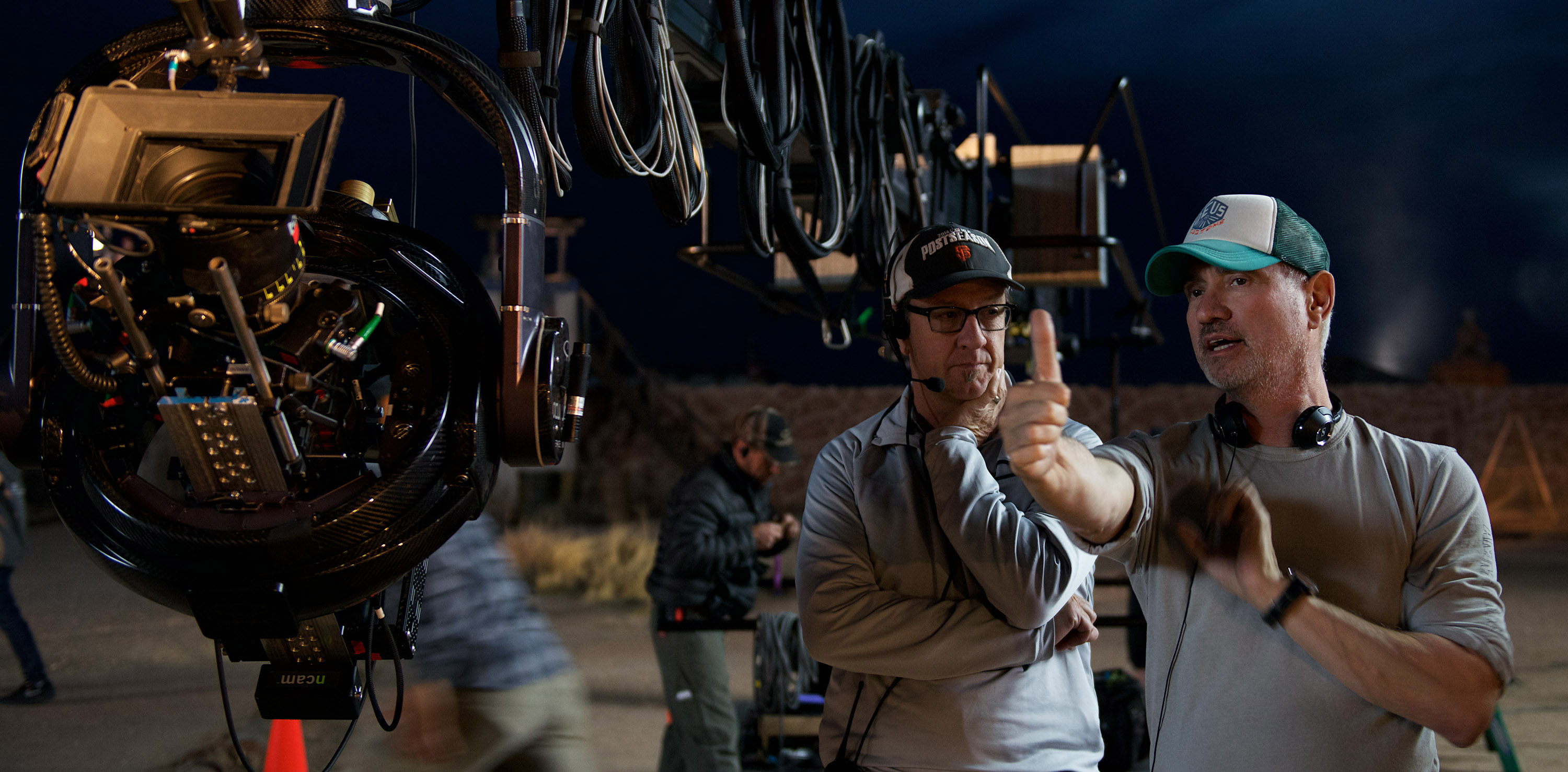Roland Emmerich’s love of action and adventure in original stories is clear in his body of work. The Day After Tomorrow (2004), Godzilla (1998) and Independence Day (1996) point to a finely-honed sense of the dark and dangerous. Emmerich goes down a new path with Midway, the fact-based story of one of the key pacific theatre battles of WWII. Americans soldiers faced off against the massive Japanese war machine, outgunned and outnumbered. But they won that battle. Emmerich’s engrossing look at those fraught days, with an all-star cast including Woody Harrelson, Nick Jonas, Dennis Quaid Mandy Moore, Patrick Wilson, David Hewlett and Japan’s Etsushi Toyokawa and remarkably lifelike battle effects shows battle, compassion, honour and realism. I spoke with Emmerich in Toronto.
[youtube url=”https://www.youtube.com/watch?v=BfTYY_pac8o” width=”500″ height=”300″]
Our world has changed so much since the Battle of Midway. Here you are – a German filmmaker making a sympathetic film on Allied forces in WWII in the Pacific theatre. Love it.
It’s an interesting time we’re living in. I wanted to make this twenty years ago but I’m happy it’s coming out now. Because when you look at our world and the nationalism and right-wing parties, then reminds people that these guys fought for democracy and they lost their lives for democracy. America was a united nation and no divisions. And when you look at American now it’s heart-wrenching for me. I came here 39 years ago and America was very good to me.
I was thinking about the men who fought in the Pacific or at Midway and what they would think of the film. Are any alive?
The last of the Doolittle Raiders just died and another from Midway, Clyde turned 102 two or three years ago, but he died. There are not many more around. There are some who were just kids.
[youtube url=”https://www.youtube.com/watch?v=HSh6v26mzAQ” width=”500″ height=”300″]
Great cast, but I was especially struck by Nick Jonas and his character’s heroism and Nick’s naturalism.
Nick actually came to us and said this is the character I want to play. We wanted him for a bigger role, Murray. But he said no, I’m a Jersey boy. I know how they talk and act, I can do this guy.
The actors play characters who are set in a different time with different behaviours, movements, words, attitudes. Did the actors enjoy going back in time?
They all like to read up on it and saw documentaries, a lot of them. There is a move that was made at the time shot in 1943 and it won the Oscar n 1944, The Fighting Lady (directed by Edward Steichen and William Wyler) It’s an hour long about life on an aircraft carrier. Everyone had the film on their computer. You see how life was, an hour-long doc about life on aircraft carriers. The pilots were eating at a table with a white tablecloth, a lot of the details came from the film. It showed how wild the dives were too. There would be a camera on the wing to know what kind of ship they were attacking. They can’t know at that moment, and they were so cocky they let the camera run for the moment they dive. It was wild.
There was a filmmaker on the carrier shooting the action, was it George Stevens?
No, it was John Ford.
This is such a compassionate film, not just in terms of the Americans. The young Japanese flyer, the enemy, looking at his empty gas and altitude indicators, his expression, absolutely gutting.
I’m happy you liked it.

Director Roland Emmerich on the set of Independence Day: Resurgence. Photo Credit: Claudette Barius.
Midway scales big for the flying and bombing effects but it also scales small in intimate human moments – perfect balance.
It is the first time I actually did something based on real facts, and historic facts and naturally it is harder to do and it works, in a weird way it’s better. You have something to hang your story on and its fact so that everything that you tell people really happened.
How did that change things?
We had a lot of research people on the set, done by us in pre-production. The writer Wes Tooke researched over for two or three years and so during the shoot, I really listened to these guys. They’d say this doesn’t feel real, or this is wrong. I was open to all suggestions.
Your prior films were often from your imagination, you called the shots. Did it feel different?
That kind of movie-making is a co-operative art, it’s not like one person says this is how it’s done. It has to be, you have to trust that the story and people you hired.
Interview by Anne Brodie
BFCA BTJA AWFJ TFCA FIPRESCI
www.twitter.com/annebrodie